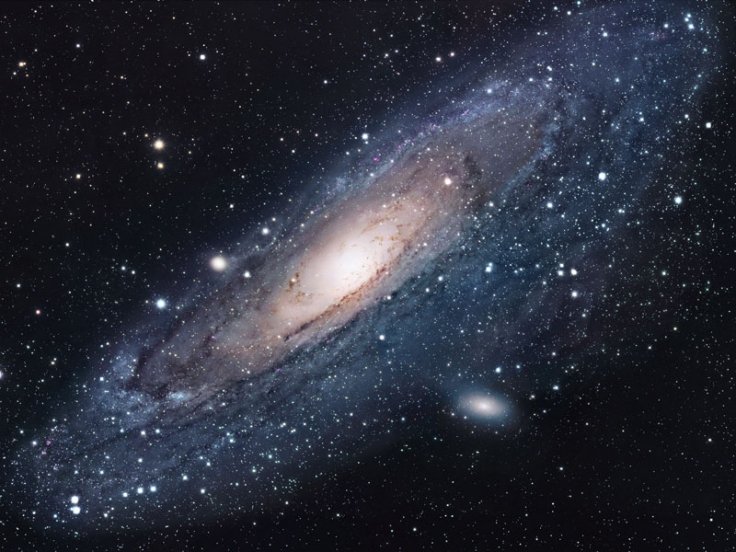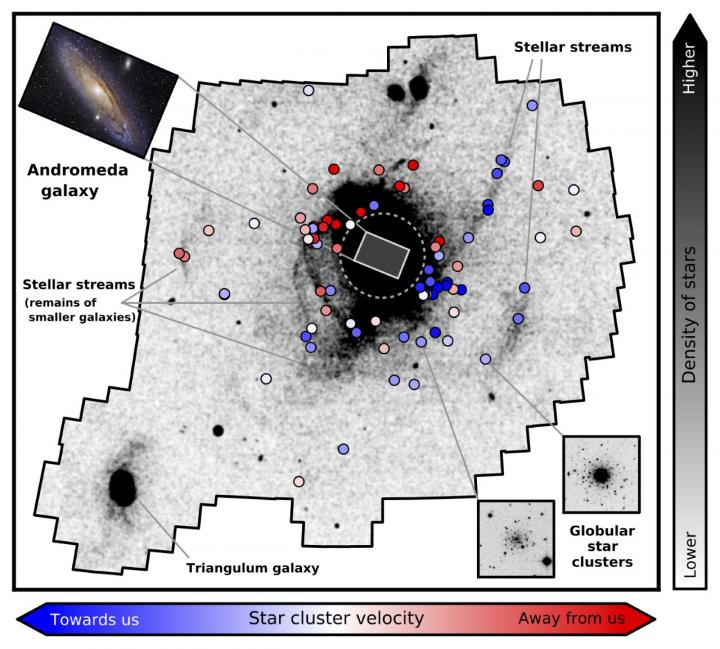
The nearest major galaxy to the Milky Way, Andromeda galaxy, which is about 2.537 million light-years away from earth, is officially a monster galaxy as it has gobbled up smaller galaxies over the past 10 billion years. But the way it is swallowing other galaxies, puzzled astronomers.
Andromeda, which is also known as Messier 31, M31, or NGC 224 may have a far more cannibalistic past than we know, revealed new research which was published on Oct. 2.
Dougal Mackey, a researcher at Australian National University and the first author of the study mentioned that "We've known for about 10 to 15 years that Andromeda has had a much more violent past, in terms of swallowing smaller galaxies, than the Milky Way has."
The study authors used five different telescopes to observe the diffuse the halo of stars at the edge of Andromeda's orbit. They found at least two clusters of stars with distinct trajectories and velocities that didn't seem to match each other, and look like alien entity in the galaxy.
The team of astronomers determined that these two clusters of stars were the remains of two ancient dwarf galaxies that Andromeda had engulfed long ago. They found that while one of them were gobbled up just a few billion years ago, the other one was swallowed by the spiral galaxy almost 10 billion-years-ago.

Mackey stated that this galaxy which is originally the Andromeda Nebula, "has a much bigger and more complex stellar halo than the Milky Way, which indicates that it has cannibalized many more galaxies, possibly larger ones.
"Knowing what kind of a monster our galaxy is up against is useful in finding out the Milky Way's ultimate fate."
The team of scientists focused their observations on 92 clusters of stars that had been identified in previous Andromeda surveys to reveal the history of this galaxy.
As per the study they estimated the velocity and apparent orbits of 77 clusters, finding two distinct groups, including one older cluster, which is swirling perpendicular to the galaxy's disk and one younger cluster that is orbiting at about a 90-degree angle to the oldsters. Mackey and his colleagues interpreted these groups as the remains of two ancient merger events, happened billions of years ago.
So who would win a galaxy fight between Andromeda and Milky Way? Or who is most powerful?
In the study, which was published in the journal Nature, Mackey said, "At the moment we are not even certain whether the Milky Way or Andromeda is the more massive system," adding that "It's very difficult to accurately weigh galaxies ... but the clusters might give us a way forward here."
However, recently another group of astronomers found three black holes in the midst of a cosmic collision. In the study, they noted that these black holes are carrying their own galaxies into the cauldron. But this particular space event could give a hint to what will happen to our galaxy, as our Milky Way is believed to be on a similar collision course with our neighbor galaxy Andromeda.
In fact, a study of the Space Telescope Science Institute in Baltimore has found that the galactic collision of Milky Way with Andromeda Galaxy will happen much earlier than previously thought.
Earlier, it was estimated that the collision will happen about 4.5 billion years from now, but the new study carried out using the data provided by the European Space Agency's Gaia spacecraft has found that the collision may take place in the next 3.9 billion years.
Expert of the institute Roeland van der Marel said, "We needed to explore the galaxies' motions in 3D to uncover how they have grown and evolved and what creates and influences their features and behaviour."
Another study has predicted that Milky Way will collide with Large Magellanic Cloud (LMC) within the next 2.5 billion years, 1.4 billion years before the estimated collision with Andromeda. Milky Way is more than 1,00,000 light year wide, while the LMC is just 14,000 light years wide. If the collision happens, Milky Way will devour the LMC.
While doomsday mongers believe that these upcoming cosmic events will turn the entire solar system to hell, experts argue that the chances of an apocalyptic event are pretty rare. Some experts and astrophysicists believe that the distances between the stars in the Milky Way are too vast for these collisions to affect the stability of the solar system.









